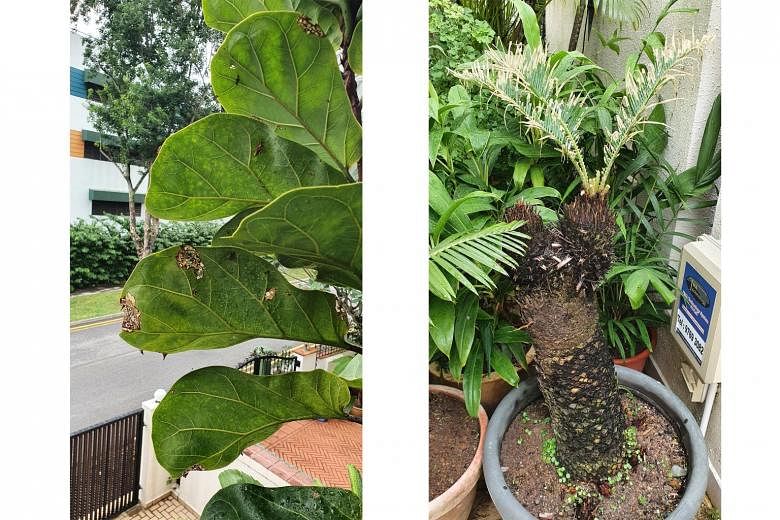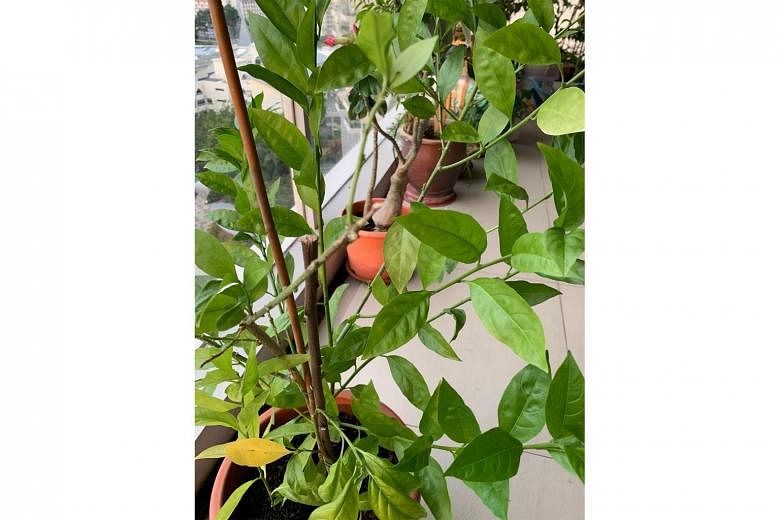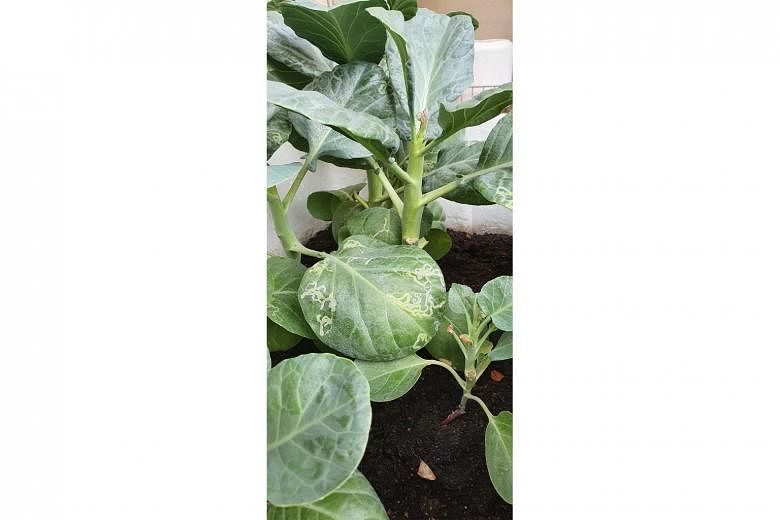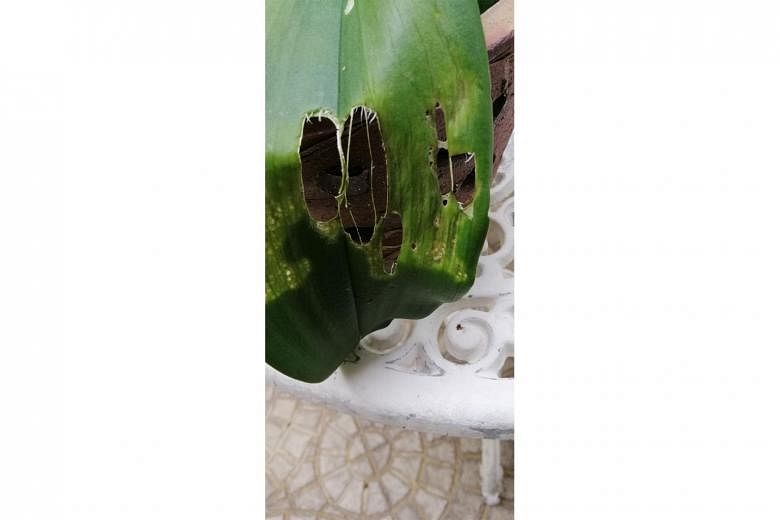Fiddle-leaf fig and sago palm infested with larvae and caterpillars
Every time new branches grow on my palm, they would die quickly with some infestation. Why is this so? The leaves of the ficus plant on my balcony are also infected and are drying out from the inside. How can I fix the problems?
Francis Ng
Your fiddle-leaf fig (Photo 1) is infested by bagworms, which are larvae of moths that cover themselves within a case made from various materials.
The young leaves of the sago palm (Cycas revoluta, Photo 2) are being eaten by caterpillars of the cycad blue butterfly. Adult butterflies are attracted to the young emerging fronds and lay their eggs there.
You can spray a pesticide such as spinosad and abamectin to eradicate the leaf-consuming larvae. They are very effective as they are absorbed into the leaf tissues after they have been applied, so they will not be washed away by the rain.
Shrub needs more sunlight to flower
What is the name of this plant? I was told it produces fragrant flowers, but there have been no blooms even after I apply flowering fertilisers. The leaves also turn yellow and drop off sometimes. Why is that happening?
Rita Tong
From the leaves, it appears that your plant is a species of Cestrum. Flowers are needed for a more definitive identification of the species.
The lack of flowers could be due to a lack of sunlight. Most flowering shrubs require at least six hours of direct sunlight to thrive and produce blooms.
The yellowing and dropping of leaves, especially those found on the lower portion of the plant, is an indication of a lack of water.
Your plant may be pot-bound - a situation where the roots have filled the pot. It may have to be moved to a larger pot, which can hold more soil and hence moisture for the plant.
Kailan infested with leaf miners
My kailan plants were growing well, albeit slowly. I transplanted the seedlings in early June and the leaves have not grown to full size yet. But recently, yellow streaks started appearing on the leaves. The new leaves also looked dried out. I check the soil's moisture and water the plants regularly. What could be the problem?
Ang Gerk Kuan
Your plants are infested with the larvae of leaf miners. The adults are small flying insects that lay eggs on leaves. Larvae that hatch burrow into leaf tissues, leading to the white tracks seen on the leaves.
Leaf miners can be difficult to control. You may want to invest in a white fine netting that prevents the egg-laying adults from reaching the plants. Organic pesticides like neem oil are reported to have some repellent effects.
As for the slow growth of your plants, you have to feed them as they are in the active growing stage and require nutrients. Ensure that the plants are receiving enough direct sunlight as overcrowding and shading will slow the growth rate.
Smaller plants can be picked first to give more space for the remaining plants to reach full size.
Leaves of orchid eaten by snails or slugs
My orchids were growing well, but the leaves were attacked by a pest. The pots are placed on a high metal rack and get direct sun for half a day. There are squirrels and snails in my garden.
Sin Chey Cheng
It appears that your orchid leaves have been eaten by snails or slugs.
You may want to check the potting media for the pests as they tend to hide in dark and moist places in the day. Hanging up your potted orchids can deter access by these pests.
You can also check for their presence at night, especially after wet weather, and remove the pests seen on your plant.
Putting snail and slug poison bait pellets may help reduce their population, but keep them out of reach of young children and pets.
• Answers by Dr Wilson Wong, an NParks-certified practising horticulturist, parks manager and ISA-certified arborist. He is the founder of Green Culture Singapore and an adjunct assistant professor (Food Science & Technology) at the National University of Singapore.
• Have a gardening query? E-mail it with clear, high-resolution pictures of at least 1MB, if any, and your full name to stlife@sph.com.sg. We reserve the right to edit and reject questions.




